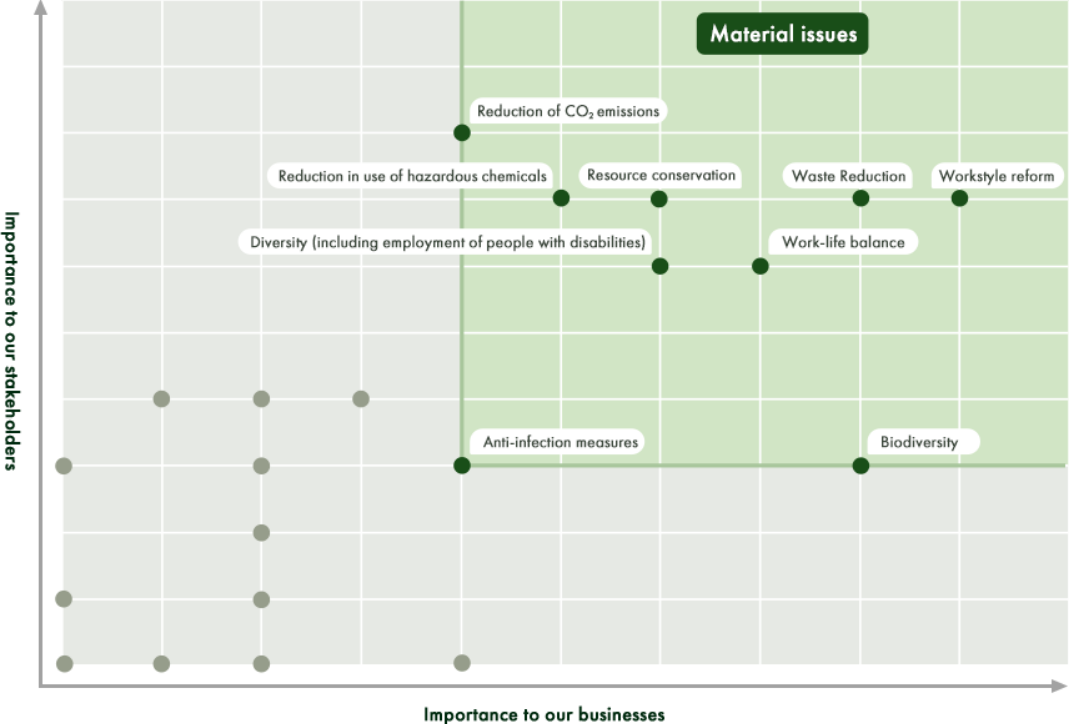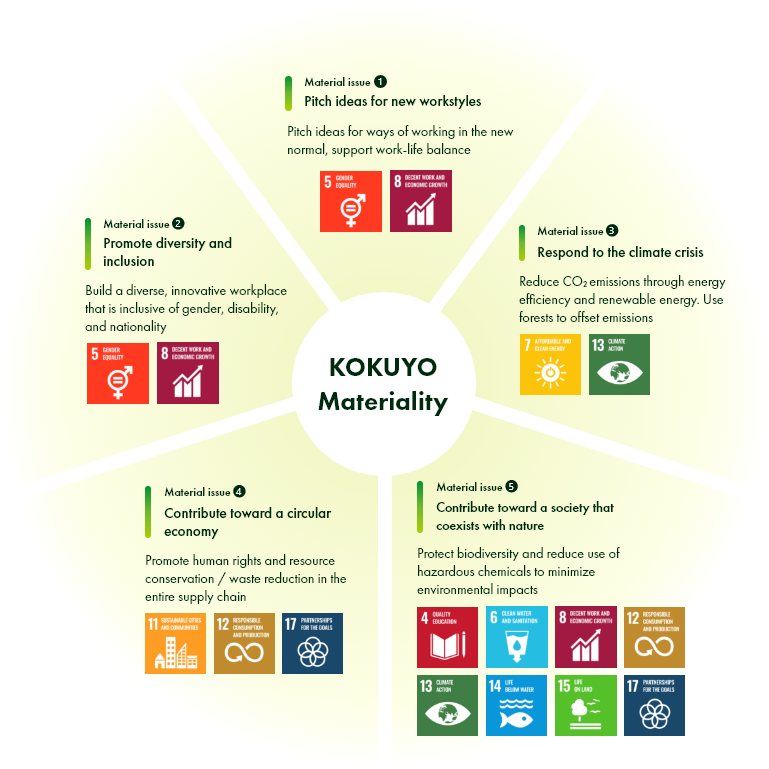SUSTAINABLE MANAGEMENT
PROCESS FOR IDENTIFYING MATERIAL ISSUES IN 2020
Process for Identifying Material Issue (2020-2021)

-
*ESG: Environmental, Social, Governance
Step 1 Identify ESG issues
First, we identified 34 potential environmental, social, and governance issues by referring to the SDGs and to data from MSCI Inc. and the Sustainability Accounting Standards Board (SASB).
| Perspective | Was a survey conducted? | Was desk research (secondary research) conducted? | |
|---|---|---|---|
| Stakeholders | Consumers | Yes | No |
| Key clients | Yes | No | |
| Investors (MSCI, SASB) | No | Yes | |
| National and local governments (growth strategy) | No | Yes | |
| Our businesses | SDG contribution from products, services, and CSR items | No | No |
| Development divisions | Yes | No | |
| Senior management | No, but a discussion was held | No |

-
*SDGs: Sustainable Development Goals MSCI: Morgan Stanley Capital International
SASB: Sustainability Accounting Standards Board CSR: Corporate Social Responsibility
Step 2 Analyze each issue’s impact on stakeholders
Having identified potential issues, we then rated each issue in terms of how much it matters to stakeholders and how much it impacts our business. Issues that had a high score on both metrics were defined as material.
Materiality matrix

Step 3 Submit to management for review
The issues rated as material were then reviewed by the management to determine whether the materiality designation was valid.

Step 4 Define material issues and goals
Finally, in regard to the material issues, we set goals/targets for 2030.
| Material issue | 2030 goal | |
|---|---|---|
| Material issue 1 Pitch ideas for new workstyles |
Pitch ideas for ways of working in the new normal, support work-life balance | Employees act on their initiative and solve problems through teamwork |
| Material issue 2 Promote diversity and inclusion |
Build a diverse, innovative workplace that is inclusive of gender, disability, and nationality | Workforce is diverse, individual differences are respected, and employees feel empowered |
| Material issue 3 Respond to the climate crisis |
Reduce CO2 emissions through energy efficiency and renewable energy. Use forests to offset emissions. | Carbon absorption: At least 6,000 t-CO2 absorbed a year |
| Reduce CO2 emissions: Emissions down by 26% from 2013 level in 2030 | ||
| Material issue 4 Contribute toward a circular economy |
Promote human rights and resource conservation / waste reduction in the entire supply chain | 100% of waste (office, buildout services, inventory) recycled |
| Procurement guidelines applied throughout corporate group | ||
| Material issue 5 Contribute toward a society that coexists with nature |
Protect biodiversity and reduce use of hazardous chemicals to minimize environmental impacts | Promote use of legal timber |
| Forest conservation: Forests thinned at 150 hectares a year | ||
| Reedbed conservation: Reeds trimmed at 1.5 hectares a year | ||

As of 2020
